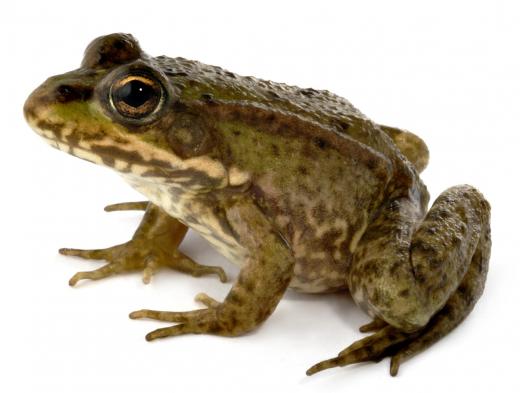What is the Difference Between Warm-Blooded and Cold-Blooded Animals?
 Michael Anissimov
Michael Anissimov
Cold-blooded animals are those whose body temperatures are regulated by their environment, and warm-blooded animals are those whose body temperatures are kept relatively constant by internal mechanisms. Along with the way their body temperatures vary, another main difference between these types of animals is that warm-blooded animals require more food. The terms "cold-blooded" and "warm-blooded" are misleading because cold-blooded animals' blood is not necessarily cold, it just varies based on the temperature of the environment. More accurate terms are "ectothermic" instead of "cold-blooded" and "endothermic" or "homeothermic" instead of "warm-blooded." Another term for ectothermic animals is "poikilotherms," which means animals that have varying body temperatures.
Examples and Exceptions

The vast majority of mammals and birds are warm-blooded, and almost all reptiles, fish, insects, amphibians and arachnids are cold-blooded. There are some exceptions, however, and some animals that have characteristics of both types. For example, bats and mole rats are mammals, but their body temperatures can vary according to their environments, especially when they are not active. Certain insects, such as hawk moths and some bees, can raise their body temperatures by beating their wings. Some fish have internal mechanisms that help keep their brains and eyes from becoming too cold, which might impair their function.
Food Requirements

One significant difference between warm-blooded and cold-blooded animals is that warm-blooded animals typically need three to 10 times as much food to survive, because they must create their own body heat. Accordingly, these endothermic animals must be three to 10 times as good at obtaining food, putting them on a different metabolic and evolutionary level. Ectotherms can rely on sunlight and other environmental factors to provide heat, rather than needing to create it themselves, so their bodies need less food.
Some Advantages and Disadvantages of Each

There are several advantages to being endothermic — greater stamina, having only one set of body enzymes that works optimally at a set temperature and the ability to increase body temperature during freezing weather. A spider that is caught in a blizzard will freeze solid, but a human being has at least a chance of survival. Ectothermic animals need to maintain several sets of enzymes for their biological processes because enzymes are sensitive to temperature, but endothermic animals can maintain one set.

The most useful advantage of being endothermic is greater stamina. An endothermic creature can outrun a cold-blooded predator as long as it avoids the initial attack. Warm-blooded predators can outrun their ectothermic prey, and endothermic animals can forage for a longer time. Some people might say that endothermic creatures are superior because they tend to have more stamina, but they cannot move faster than cold-blooded animals for short bursts, and they starve far more easily than ectothermic creatures.
AS FEATURED ON:
AS FEATURED ON:















Discussion Comments
I want to know how the actual metabolic processes are different for endo and ectothermic animals. Are there different cellular process for energy production? I'd like to see more detail on this.
I want to find the warm and cold blooded animals but in detail and there's many important words are given.
How does this affect their day to day activities?
Very good article. I got everything I was looking for.
@anon63452 - If you need similarities between the two, then presumably you just need to know the characteristics of animals!
For starters, all animals are multicellular organisms (made of more than one cell) and most are motile, meaning they have the ability to move.
Maybe the most interesting commonality between warmblooded animals and coldblooded is that all animals need to eat! In contrast to plants, for instance, which get their energy from the sun and from nonliving chemicals, animals must ingest other live or dead organisms and digest them in order to survive.
i need similarities too! i'm in 6th grade. i need stuff i can understand!
I want to find the warm and cold blooded animals but in detail and there's many important words are given.
Post your comments